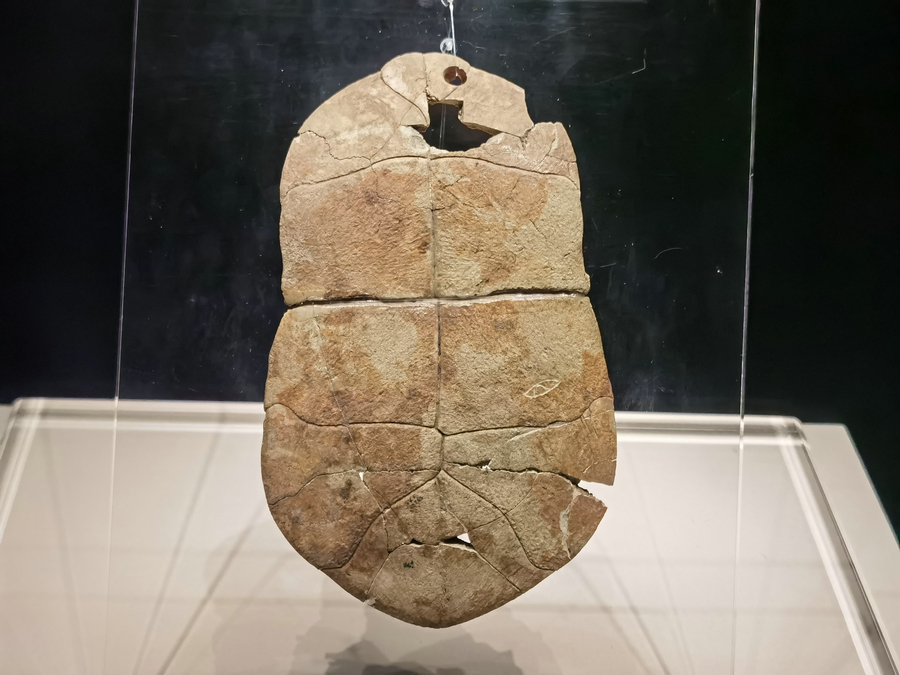

Many exhibits ushered visitors to trace those embryos of writing, including marks on a 7,300-year-old pottery from the Shuangdun site in Anhui province, on a black pottery jar of the Liangzhu Culture dating back 5,300 to 4,300 years in Zhejiang province, and on a tortoise shell of the Jiahu site in Henan province from 8,000 years ago.
The mark on the Jiahu tortoise shell resembles Chinese character mu (eye) in oracle bone inscriptions, according to Wei. It is so far the oldest artifact that indicates an origin of hanzi.
In spite of their age, oracle bone inscriptions fully reflect all character-formation varieties of later history.
"Through evolution from time to time, the appearance of Chinese characters has gradually become what we're familiar with today," Wei says. "The identity of a shared community of a Chinese nation has also been strengthened when the uniform writing system was gradually formed."
Before the Qin Dynasty (221-206 BC), bronze wares used to compose a main media for documentation. In the exhibition, Qiang Basin from the Western Zhou Dynasty (c. 11th century to 771 BC) with a 284-character inscription not only demonstrates high-level craftsmanship, but also remains crucial documentation.
Unearthed in Baoji, Shaanxi province, the inscription eulogized the merits of seven Zhou kings, and it also briefly recorded stories of the family who made the basin. Highlights of history books surrounding the rulers and individuals who are absent in the grand narrative meet on this single artifact.